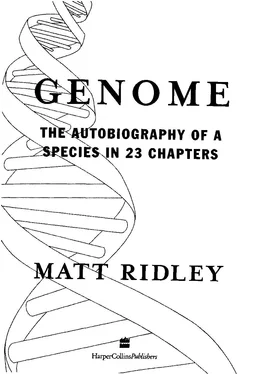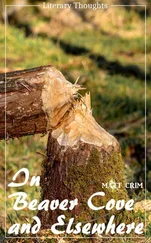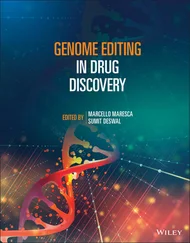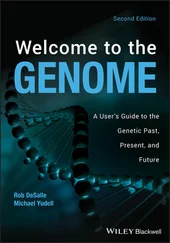Genome - Matt Ridley
Здесь есть возможность читать онлайн «Genome - Matt Ridley» — ознакомительный отрывок электронной книги совершенно бесплатно, а после прочтения отрывка купить полную версию. В некоторых случаях можно слушать аудио, скачать через торрент в формате fb2 и присутствует краткое содержание. Жанр: Старинная литература, на английском языке. Описание произведения, (предисловие) а так же отзывы посетителей доступны на портале библиотеки ЛибКат.
- Название:Matt Ridley
- Автор:
- Жанр:
- Год:неизвестен
- ISBN:нет данных
- Рейтинг книги:5 / 5. Голосов: 1
-
Избранное:Добавить в избранное
- Отзывы:
-
Ваша оценка:
- 100
- 1
- 2
- 3
- 4
- 5
Matt Ridley: краткое содержание, описание и аннотация
Предлагаем к чтению аннотацию, описание, краткое содержание или предисловие (зависит от того, что написал сам автор книги «Matt Ridley»). Если вы не нашли необходимую информацию о книге — напишите в комментариях, мы постараемся отыскать её.
Matt Ridley — читать онлайн ознакомительный отрывок
Ниже представлен текст книги, разбитый по страницам. Система сохранения места последней прочитанной страницы, позволяет с удобством читать онлайн бесплатно книгу «Matt Ridley», без необходимости каждый раз заново искать на чём Вы остановились. Поставьте закладку, и сможете в любой момент перейти на страницу, на которой закончили чтение.
Интервал:
Закладка:
— you do not need to learn a new way of thinking. There is no fancy physics, no chaos theory or quantum dynamics, no conceptual novelties. Like the discovery of the genetic code itself, what seemed initially to be a problem that could only be solved with new concepts turns out to be just a simple, literal and easily understood sequence of events. From the basic asymmetry of chemicals injected into the egg all else follows. Genes turn each other on, giving the embryo a head and a rear. Other genes then get turned on in sequence from bow to stern giving each compartment an identity. Other genes then polarise the compartments into front and rear halves. Other genes then interpret all this information and make ever more complicated appendages and organs. It is a rather basic, chemical—mechanical, step-by-step process that would have appealed more to Aristotle than Socrates. From simple asymmetry can grow intricate pattern.
Indeed, so simple is embryonic development in principle - though not in detail — that it is tempting to wonder if human engineers should not try to copy it, and invent self-assembling machines.
C H R O M O S O M E 1 3
P r e - H i s t o r y
Antiquitas saeculi juventus mundi (Ancient times were the youth of the world) Francis Bacon
The surprising similarity of embryological genes in worms, flies, chicks and people sings an eloquent song of common descent. The reason we know of this similarity is because D N A is a code written in a simple alphabet — a language. We compare the vocabulary of developmental genes and find the same words. On a completely different scale, but with direct analogy, the same is true of human language: by comparing the vocabularies of human languages, we can deduce their common ancestry. Italian, French, Spanish and Romanian share word roots from Latin, for instance. These two processes — linguistic philology and genetic phylogeny - are converging upon a common theme: the history of human migrations.
Historians may lament the lack of written records to document the distant, prehistoric past, but there is a written record, in the genes, and a spoken one, too, in the very vocabulary of human language.
For reasons that will slowly emerge, chromosome 13 is a good place to discuss the genetics of genealogy.
1 8 6 G E N O M E
In 1786 Sir William Jones, a British judge in Calcutta, announced to a meeting of the Royal Asiatic Society that his studies of the archaic Indian language Sanskrit had led him to conclude that it was a cousin of Latin and Greek. Being a learned fellow he also thought he saw similarities between these three languages and Celtic, Gothic and Persian. They had all, he suggested, 'sprung from some common source'. His reasoning was exactly the same as the reasoning which led modern geneticists to propose the existence of the Roundish Flat Worm of 530 million years ago: similarities of vocabulary. For instance, the word for three is 'tres' in Latin, 'treis' in Greek and
'tryas' in Sanskrit. Of course, the great difference between spoken languages and genetic languages is that there is much more horizontal borrowing of words in spoken language. Perhaps the word for three had somehow been inserted into Sanskrit from a western tongue.
But subsequent research has confirmed that Jones was absolutely right and that there was once a single people, speaking a single language in a single place and that descendants of those people brought that language to lands as far apart as Ireland and India, where it gradually diverged into modern tongues.
We can even learn something about these people. The Indo¬
Europeans, as they are known, expanded at least 8,000 years ago from their homeland, which some think was in the modern Ukraine, but was more likely in a hilly part of modern Turkey (the language had words for hills and fast-flowing streams). Whichever is correct, the people were undoubtedly farmers - their language also had words for crops, cows, sheep and dogs. Since this dates them to soon after the very invention of agriculture in the so-called fertile crescent of Syria and Mesopotamia, we can easily picture that their immense success in stamping their mother tongue on two continents was due to their agricultural technology. But did they impose their genes in the same way? It is a question I shall have to attack indirectly.
Today in the Indo-European homeland of Anatolia, people speak Turkish, a non-Indo-European tongue brought later by horse-riding nomads and warriors from the steppes and deserts of central Asia.
These 'Altaic' people owned a superior technology, too - the horse P R E - H I S T O R Y 187
- and their vocabulary confirms as much: it is full of common words for horses. A third family of languages, the Uralic, spoken in northern Russia, Finland, Estonia and, bizarrely, Hungary, bears witness to a previously successful expansion of people, before and after the Indo-Europeans, using an unknown technology - herding of domestic animals, perhaps. Today the Samoyede reindeer herders of northern Russia are perhaps typical Uralic speakers. But if you delve deeper, there is undoubtedly a family connection between these three linguistic families: Indo-European, Altaic and Uralic.
They derive from a single language spoken throughout Eurasia maybe 15,000 years ago by hunter-gathering people who had, to judge by the words in common in their descendant tongues, not yet domesticated any animals, except possibly the wolf (dog). There is disagreement about where to draw the boundaries that contain the descendants of these 'Nostratic' people. The Russian linguists Vladislav Illich-Svitych and Aharon Dolgopolsky prefer to include the Afro-Asiatic family of languages spoken in Arabia and North Africa, whereas Joseph Greenberg of Stanford University omits them but includes the Kamchatkan and Chukchi languages of north-east Asia.
Illich-Svitych even wrote a little poem in phonetic Nostratic, having deduced what the root words sounded like.
The evidence for this linguistic super-family lies in the simple little words that change least. Indo-European, Uralic, Mongol, Chukchi and Eskimo languages, for example, almost all use or used the 'm' sound in the word for 'me' and the 't' sound in the word for 'you' (as in the French 'tu'). A string of such examples stretches to breaking point the coincidence hypothesis. Remarkable as it seems, the languages spoken in Portugal and Korea are almost certainly descended from the same single tongue.
Quite what the Nostratic people's secret was we may never know.
Perhaps they had invented hunting with dogs or stringed weapons for the first time. Perhaps it was something less tangible, like demo-cratic decision making. But they did not altogether wipe out their predecessors. There is good evidence that Basque, several languages spoken in the Caucasus mountains and now-extinct Etruscan do 1 8 8 G E N O M E
not belong to the Nostratic super-family of languages, but share an affinity with Navajo and some Chinese tongues in a different super-family known as Na-Dene. We are getting into highly speculative ideas here, but Basque, which survived in the Pyrenees (mountains are backwaters of human migration, bypassed by the main flows), was once spoken in a larger area, as shown by place names, and the area coincides neatly with the painted caves of Cro-Magnon hunters. Are Basque and Navajo linguistic fossils of the first modern people to oust the Neanderthals and spread into Eurasia? Are speakers of these tongues actually descended from mesolithic people, and surrounded by neighbours of neolithic descent speaking Indo-European languages? Probably not, but it is a delicious possibility.
In the 1980s Luigi Luca Cavalli-Sforza, a distinguished Italian geneticist, watched these unfolding discoveries of linguistics and decided to ask the obvious question: do linguistic boundaries coincide with genetic ones? Genetic boundaries are inevitably more blurred, because of intermarriage (most people speak only one language, but share the genes of four grandparents). The differences between French and German genes are much less definite than the difference between the French and the German languages.
Читать дальшеИнтервал:
Закладка:
Похожие книги на «Matt Ridley»
Представляем Вашему вниманию похожие книги на «Matt Ridley» списком для выбора. Мы отобрали схожую по названию и смыслу литературу в надежде предоставить читателям больше вариантов отыскать новые, интересные, ещё непрочитанные произведения.
Обсуждение, отзывы о книге «Matt Ridley» и просто собственные мнения читателей. Оставьте ваши комментарии, напишите, что Вы думаете о произведении, его смысле или главных героях. Укажите что конкретно понравилось, а что нет, и почему Вы так считаете.












